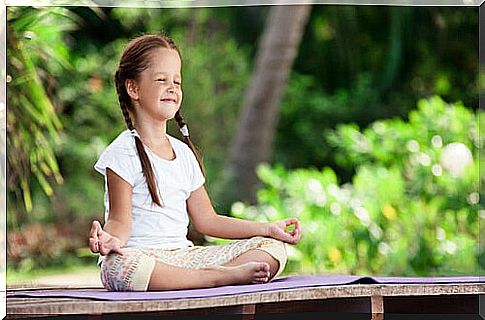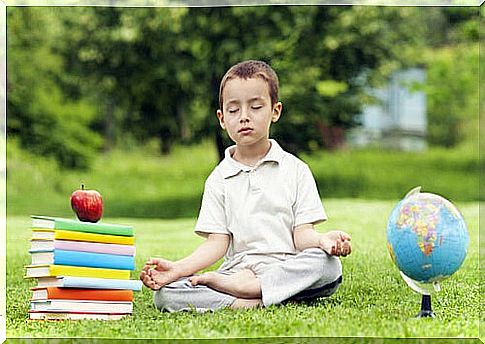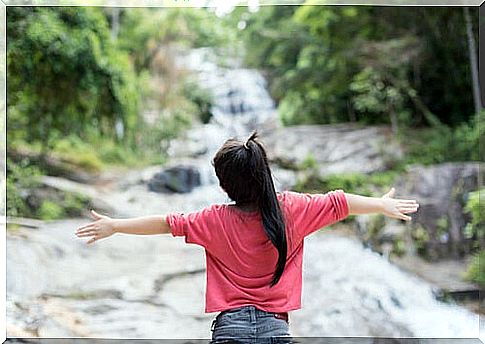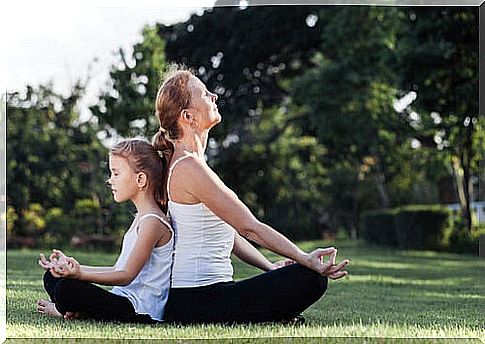Meditation In Childhood: Cultivating Our Inner Garden From A Young Age

Meditation is a health and wellness technique that has great repercussions for everyone: men and women, the elderly, adults, young people and, of course, children too. It is not enough to take care of the body, it also helps to take care of the mind and for this the technique that we present today is very appropriate.
Meditation has a great positive impact on the growth and integral development of the little ones. Children who meditate have been shown to get better grades in school. And it is that this technique has multiple benefits and positive psychoeducational and emotional implications. In addition to contributing to the well-being of children, it improves their capacity for concentration, relaxation, creativity and resilience.
In adulthood, meditation enriches us in many aspects, not only on a psychological and emotional level, but also on a physical level. Something similar happens in children, although with benefits also associated with their learning. After all, meditation is a type of gymnastics or mental training and by practicing it the child makes his attention remain agile so that it will be easier, for example, to acquire new knowledge.
Why is meditation so important for children?
We live in the age of “overstimulation.” Television, internet, interactive games, agendas full of extracurricular activities, mobile phones … Stress has also flooded the lives of the little ones. In this sense, we cannot forget that minors have an immature nervous system, it is difficult for them to process a large number of stimuli at the same time.
Children who are overstimulated can have social difficulties, language and motor skills problems, as well as concentration problems, of course. These issues can contribute to learning or behavioral difficulties later in life. Through meditation, the negative effects of this overstimulation can be neutralized and offset.

Tronick and Gianino (1986) found that children are born with the ability to self-relax. In fact, babies do it several times a minute. In this sense, meditation will help children not lose and maintain their inherent capacity for self-relaxation. A conservation that is of vital importance for your emotional regulation, both now and in your future.
What is meditation?
Meditating is focusing attention on something concrete, it can be a thought, an object, an image, the body itself, our thoughts, a visualization …
Meditation is carried out very simply. We can start by focusing our attention on body posture, breathing, and attitude. So meditation is about paying full attention and awareness to everything we are and experience. That is, to realize at all times what is happening.

We can find different types of activities focused on meditation and that are very appropriate to practice with younger minds. All of them are intended to focus attention to calm the mind and enter another state of consciousness:
- Creative visualizations (tactile, auditory, visual, olfactory, taste…).
- Guided meditations.
- Specific activities of mindfulness or mindfulness.
- Integrative mindfulness practices in everyday life (learning to maintain full attention in the tasks that we carry out in our day to day).
- Control of breathing.
- Body awareness practices focusing attention on different parts of the body.
- Meditation with mantras (repetitions of sounds, syllables, words or phrases with the aim of improving our psychophysical state).
Benefits of meditation in childhood
In compilation form, we can list the following benefits that meditation has for children, although there are probably many more :
- Helps to fall asleep and make it restful.
- It reduces and helps to make the anxiety and fears so common in these ages disappear.
- Helps manage daily stress.
- Encourage creative thinking.
- Helps control frustration.
- Improves concentration.
- Improves the immune system.
- Increases the speed of sensory and cognitive processing.
- Contributes to improving self-concept and self-esteem.
- It facilitates the control and suppresses muscular ailments or physical discomforts, sometimes typical of this stage of constant growth.
- Boost security and self-confidence.
- Improves self-control and physical and emotional self-regulation, helping them to be less impulsive.
- Helps to properly manage emotions.
- Boost academic performance.
- It teaches you to be more responsible : not only for your material things but for your emotions, your life and your happiness.
- It helps to connect with a state of tranquility that promotes non-violent attitudes when interacting.
- It helps in the formation of more loving people, more connected with the environment and with others.
- Improve social relationships. It enhances the feeling of empathy and gratitude.
- Helps cope with daily frustrations and difficulties. Meditation promotes the development of the capacity to accept what happens.
- Strengthens the foundations of a more solid maturity.
- Helps to feel happier, improving mood.

A present for the whole life…
Teaching and helping a child meditate is a way of establishing a very special bond with him. A bond that they will be able to establish with their own in the future and so on. In this sense, childhood is the time of learning, of imagination … and through meditation, the mental capacity of the little ones will be increased.
By teaching children to meditate, we lay the foundations of a habit that will be very useful to them throughout their lives. In the same way, we can consider that teaching the little ones to meditate is a way to help future generations enjoy greater awareness and balance.









